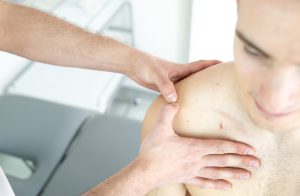
A few weeks ago, a physically active 22-year-old young man sought help at our clinic, who has been experiencing issues with his right shoulder for the past two years in the form of clicking during workouts at the gym.
Several examinations were done by various specialists, and an ultrasound indicated the presence of a small calcification in one of the deep tendons of the shoulder. He underwent physiotherapy and shockwave therapy to reduce symptoms and remove the calcification.
Despite all this, and as he did not improve, a magnetic resonance imaging (MRI) scan was performed, which, apart from a minor calcification, showed no other pathology.
During the examination, it became clear that the clicking occurs when initiating scapular movement while raising the arm. This condition is sometimes referred to as subscapular bursitis by some authors, but it has other names as well. Essentially, the scapula slides over the soft tissues covering the chest during movement. If these tissues become irregular, usually as a result of microtraumas typical of weight training, a condition characterized by crepitus, or clicks, can develop, as in this particular case. Some manual therapy and specific exercises significantly reduced symptoms in this young patient, and if he follows training advice, it is possible that they may disappear completely.
In an age where imaging diagnostics are the gold standard in diagnosing musculoskeletal conditions (ultrasound, MRI, CT, X-ray), there are still conditions that cannot be identified without a detailed examination and will not show up on the mentioned tests.
Furthermore, clicking in the shoulder girdle during movement can also be a sign of shoulder instability, degenerative joint changes, partial tendon ruptures, cervical spine changes, as well as some rare diseases. Each of these problems requires specific treatment and possibly additional tests to confirm the diagnosis and assess the level of damage. However, it all begins with a detailed physical examination.
